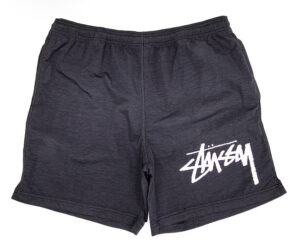The 1947 Cadillac Series 62 Sedanette Fastback stands as a testament to Cadillac’s commitment to luxury, innovation, and superior craftsmanship. As part of the third generation of the Series 62 lineup, the Sedanette Fastback introduced a streamlined design that set it apart from the more traditional styling of its time.
This model captured the spirit of post-World War II optimism with its bold, aerodynamic lines, powerful L-head V8 engine, and opulent interior.
Designed under the guidance of legendary General Motors stylist Harley Earl, the 1947 Cadillac Series 62 Sedanette remains an enduring symbol of American automotive excellence, highly prized by collectors and enthusiasts alike.
A Bold and Distinctive Design
One of the most defining features of the 1947 Cadillac Series 62 Sedanette is its fastback silhouette, which earned it the “Sedanette” nickname. Unlike traditional sedans, which featured a more upright trunk design, the Sedanette’s rear deck sloped gracefully from the roofline, creating a seamless, flowing shape.
This design was heavily inspired by streamlined trains and aircraft of the era, emphasizing the growing influence of aerodynamics in automotive styling.
The front fascia featured Cadillac’s signature bold egg-crate grille, flanked by large, rounded fenders that seamlessly blended into the body. The car’s integrated headlights and sweeping chrome accents added to its sense of grandeur.
The Sedanette’s long hood and low stance gave it a more aggressive yet elegant presence on the road, reinforcing Cadillac’s reputation as the pinnacle of American luxury automobiles.
The fastback design was not just about looks—it also contributed to better aerodynamics, making the car more efficient at higher speeds.
Although fuel efficiency was not a primary concern for luxury cars of the 1940s, Cadillac’s commitment to engineering refinement ensured that the Sedanette performed as smoothly as it looked.
Powerful Performance and Engineering Excellence
Under the hood, the 1947 Cadillac Series 62 Sedanette was equipped with a 346-cubic-inch (5.7L) L-head V8 engine, which produced 150 horsepower. While this may seem modest by modern standards, it was considered powerful for its time, especially in a luxury vehicle.
The engine delivered smooth and consistent power, making the Sedanette an excellent highway cruiser.
The powerplant was mated to a three-speed manual transmission, though Cadillac also offered the Hydra-Matic automatic transmission, a revolutionary feature that further enhanced the car’s ease of operation.
Cadillac was among the first American automakers to popularize automatic transmissions, which made driving more accessible to a broader audience.
Cadillac’s independent front suspension provided a comfortable ride, absorbing road imperfections with ease. Combined with a sturdy, well-engineered chassis, the Sedanette was remarkably smooth and stable, a hallmark of Cadillac’s commitment to opulence.
Even at higher speeds, the car maintained a quiet and composed demeanor, making it one of the most refined driving experiences available in the post-war era.
Luxury and Craftsmanship Inside the Cabin
Inside, the 1947 Cadillac Series 62 Sedanette Fastback embodied opulence and sophistication. The interior was designed with high-quality materials, featuring leather upholstery, chrome accents, and polished wood trim.
The art-deco-inspired dashboard was not only visually striking but also highly functional, with well-organized gauges and controls.
The seating was spacious and comfortable, accommodating up to five passengers in plush luxury. Unlike some of its competitors, Cadillac focused on providing a refined driving experience, ensuring that both the driver and passengers enjoyed a quiet, insulated cabin.
The thick carpeting, padded door panels, and advanced soundproofing materials minimized road noise, reinforcing Cadillac’s reputation for unmatched comfort.
One of the most distinctive features of the interior was its instrument panel, which was designed with symmetry and elegance in mind. The large speedometer, fuel gauge, and temperature dials were clearly visible, while the radio and heater controls were positioned for easy access. The chrome-trimmed steering wheel added a touch of class, completing the luxury experience.
Post-War Significance and Market Reception
The 1947 Cadillac Series 62 Sedanette Fastback was introduced during a time of great economic prosperity in the United States. With World War II over, American consumers were eager to embrace modern luxury and technological advancements. Cadillac, already an established leader in the premium automotive segment, capitalized on this demand by offering a vehicle that blended elegance, performance, and innovation.
The public reception to the Sedanette was overwhelmingly positive. It was seen as a status symbol, appealing to affluent buyers who wanted a prestigious and stylish automobile. The fastback design, in particular, was revolutionary, setting the stage for future Cadillac models that would emphasize sleek and aerodynamic styling.
While other luxury automakers like Packard, Lincoln, and Chrysler Imperial offered competitive models, Cadillac maintained its dominance thanks to its superior engineering, build quality, and brand prestige. The Series 62 Sedanette was one of the most desirable vehicles of its time, and its sales success solidified Cadillac’s position as America’s premier luxury car manufacturer.
A Collector’s Dream: Rarity and Value Today
Today, the 1947 Cadillac Series 62 Sedanette Fastback is a highly sought-after classic car, with well-preserved or fully restored examples commanding premium prices at auctions and private sales. Its distinctive design, historical significance, and luxurious appointments make it a favorite among collectors.
Several factors contribute to its value in the classic car market:
Iconic Design – The fastback silhouette and sweeping lines make it one of the most recognizable Cadillac models ever produced.
Post-War Appeal – As one of the first luxury cars to hit the market after WWII, it represents a golden era of American automotive innovation.
Rarity – While Cadillac produced a significant number of Series 62 models, the Sedanette Fastback variant remains relatively rare, increasing its desirability.
Restoration Potential – Many enthusiasts appreciate the challenge and reward of restoring a classic Cadillac to its former glory, making original and unrestored examples especially valuable.
Investment Worthiness – Classic Cadillacs, especially those from the 1940s and 1950s, continue to appreciate in value, making them a worthwhile investment for collectors.
At classic car auctions, a well-maintained or fully restored 1947 Cadillac Series 62 Sedanette can fetch anywhere from $50,000 to over $100,000, depending on its condition, originality, and historical documentation.
Legacy and Influence on Future Cadillac Models
The influence of the 1947 Cadillac Series 62 Sedanette Fastback extended beyond its production years. It helped pave the way for future Cadillac design language, including the tailfin era of the 1950s and the continued emphasis on aerodynamic elegance. The concept of a streamlined, fastback coupe continued to evolve, eventually inspiring models such as the 1949 Cadillac Series 62 Coupe de Ville and later Cadillac Eldorado models.
Cadillac’s success with the Series 62 lineup in the late 1940s reinforced the brand’s status as the gold standard of American luxury vehicles, a legacy that continues to this day.
A Timeless Symbol of Automotive Excellence
The 1947 Cadillac Series 62 Sedanette Fastback remains one of the most iconic, stylish, and desirable cars of the post-war era. With its breathtaking design, powerful V8 engine, luxurious interior, and historical significance, it represents the perfect blend of performance, elegance, and innovation.
Whether admired at classic car shows, preserved in private collections, or enjoyed on the open road, the Sedanette Fastback continues to be a symbol of Cadillac’s golden age. It is a vehicle that not only defined an era but also continues to captivate automotive enthusiasts more than seven decades later.
No comments yet.








